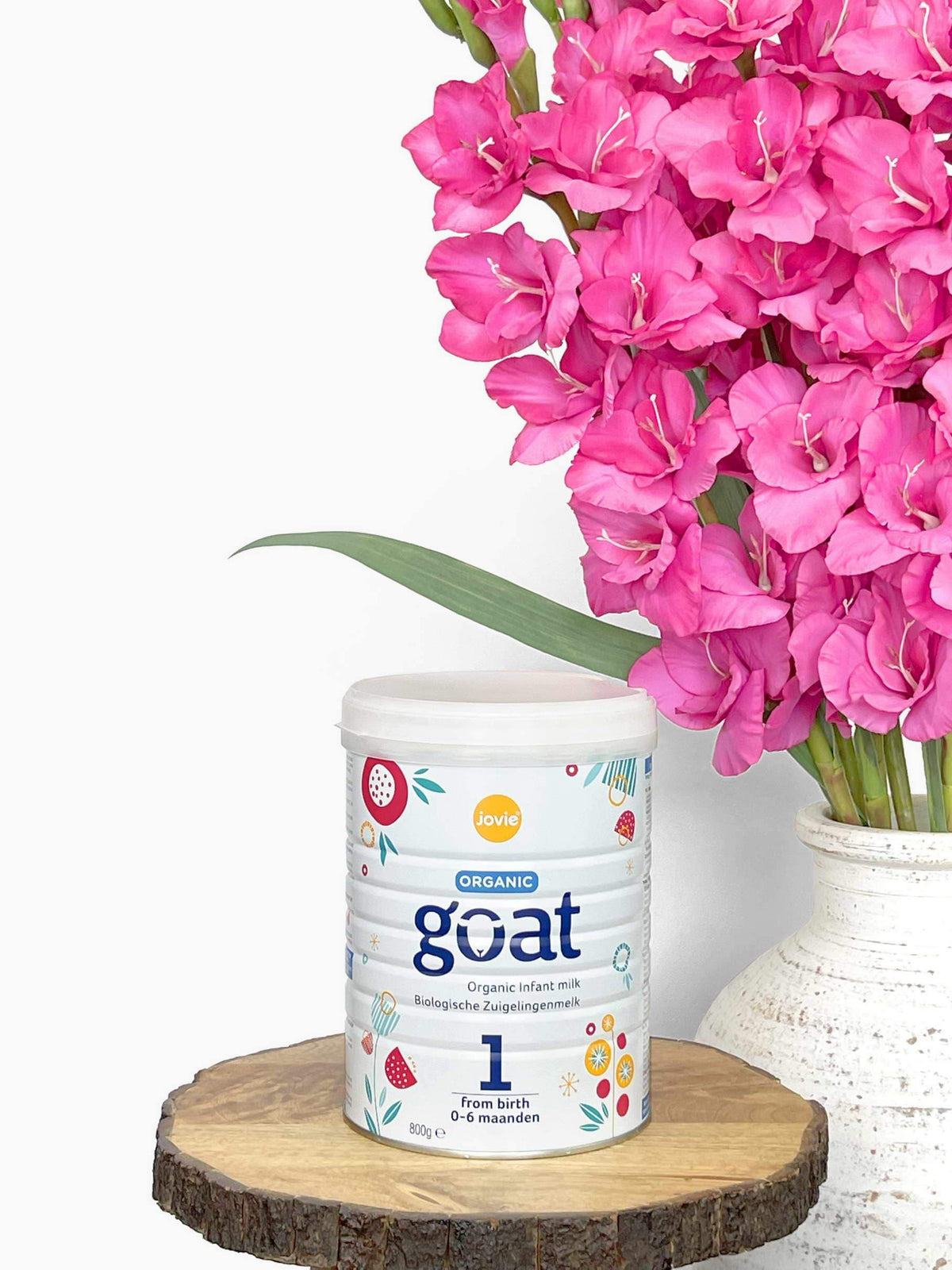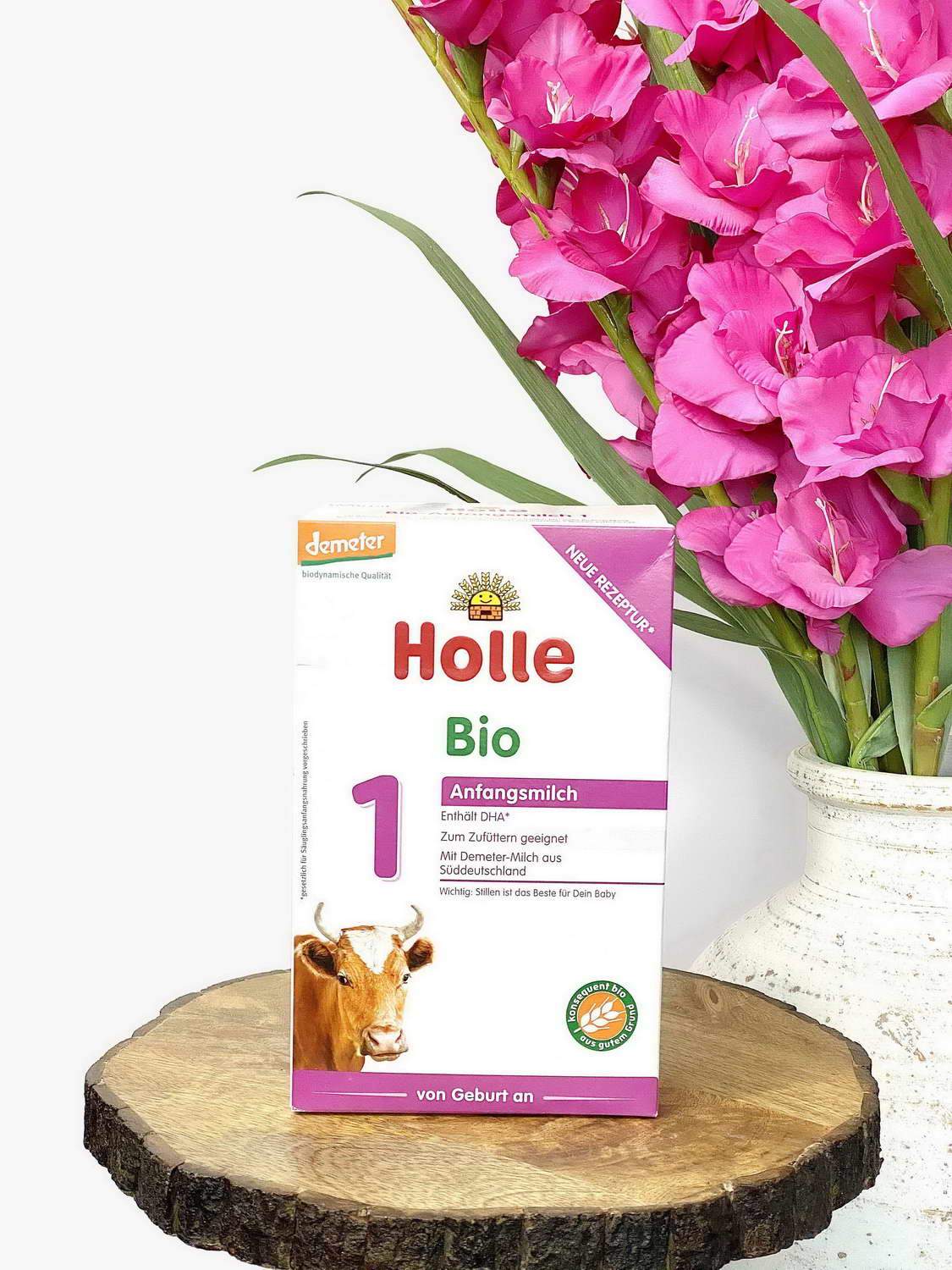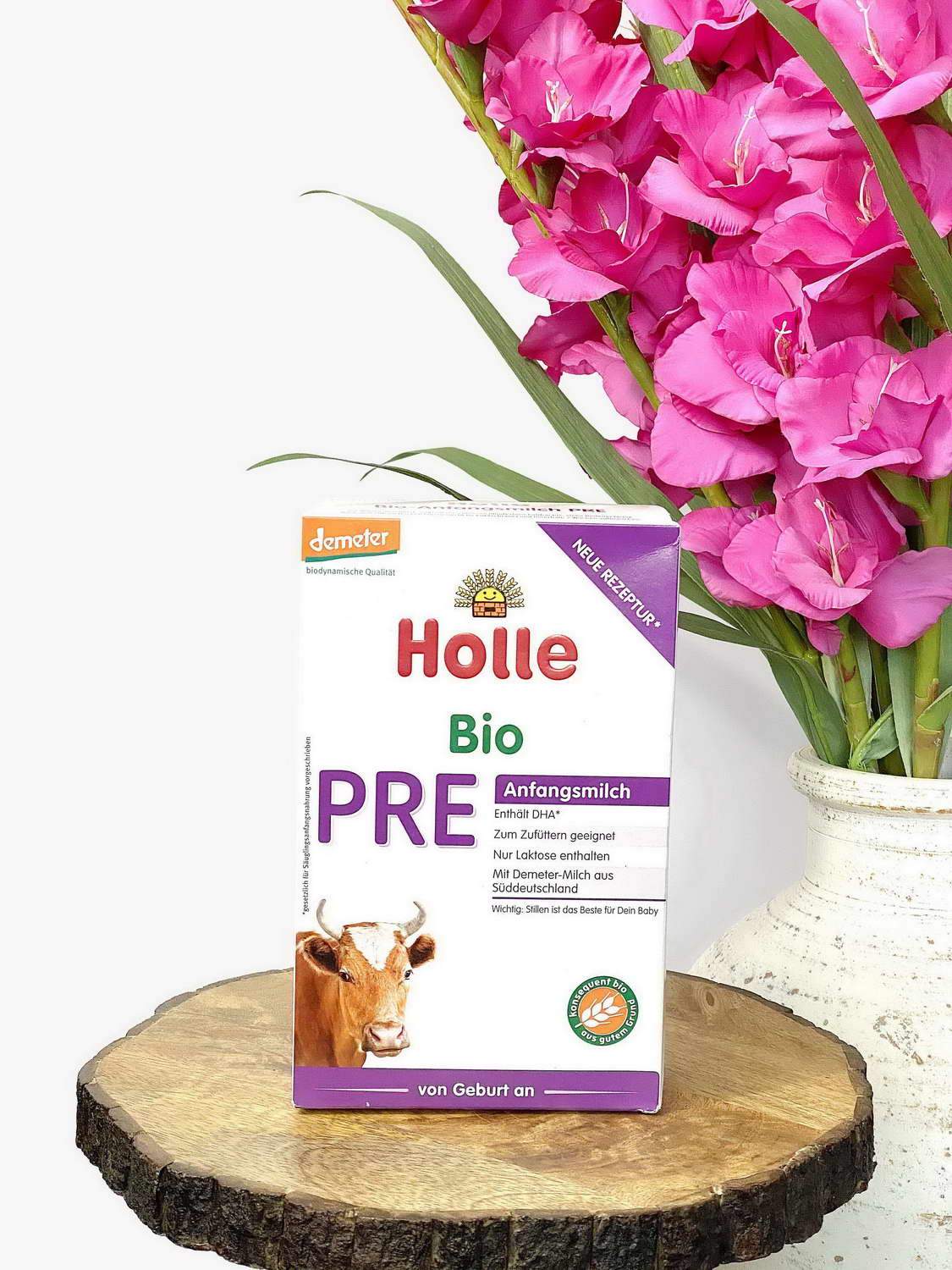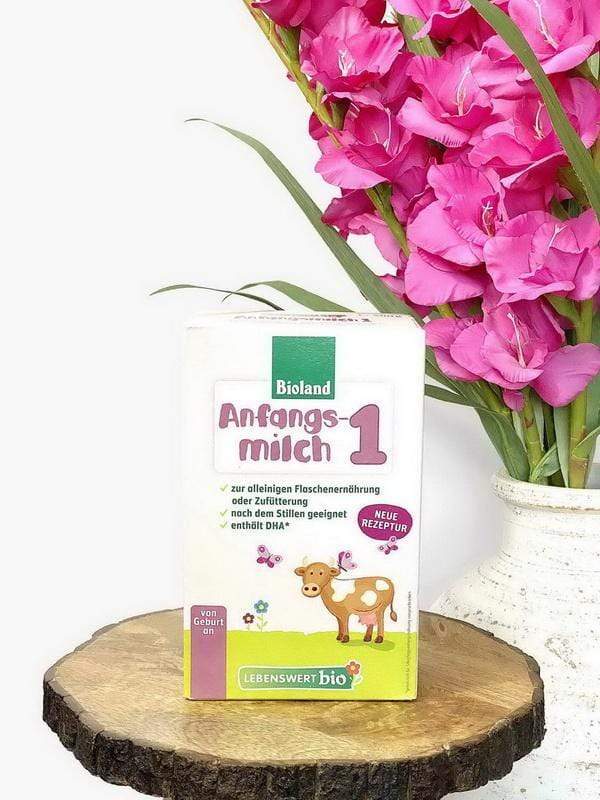The search for the perfect alternative to breast milk is nothing new. As far back as the first written history you can find records of diverse ways to bring a suitable substitute to littles ones.
From past to present, infant nutrition has a fascinating history that slowly evolved into the infant nutrition of modern day. In this article we will take a peek down the baby formula timeline and to find out, what did babies do before formula?
Early Baby Formula Alternatives
Ancient Breastfeeding: Wet Nurse
Wet nursing was undertaken as early as 2000 BC and continues today. The oldest breastfeeding alternative was helpful when women died in childbirth or could not breastfeed due to health reasons.
Across historical periods there are many accounts of women that acted as wet nurses for the children of other mothers in exchange for money or sadly as part of a slave's labor.
The modern wet nurse is a way for this ancient tradition to continue in this new era. With the advent of breast pumps, indoor freezers, and milk bags comes a new wet nurse tradition of milk sharing. This form of breast milk sharing does not require wet nursing in the traditional sense.
It does, however, continue to allow women who have an abundance of breast milk to share with others in need, in both formal and informal ways.
Clay Vessels
As long as 7,000 years ago, Stone Age farmers in Central Europe were making and using small pottery shaped like bottles or cups with spouts.
Infants that needed alternative nutrition would be fed animal milk though the nipple shaped end.
Medieval Breastfeeding: Animal Horn
Hollowed animal’s horns were used in the Middle Ages for babies to drink animal milk from.
Naturally shaped like a funnel, leather sacks with the animal milk of choice were attached to the broad ends of the hollow horns and their babies would suck the milk through holes in the narrow part.
Wooden Baby Bottle
Much like the clay pots, carved wooden vessels were crafted and used to feed babies collected breast milk from local mothers and farm animals.
Pap Boats
Bread soaked in water, sugared water or cow’s milk called pap were given to babies in between the 16th through the 18th century.
Bubby Pot
In the 1700s a tiny teapot was used for feeding infants. It was made of pewter or silver and mothers or wet nurses would add a combination of breastmilk and other foods or animal milks to feed their babies.
The spout of the bubby pot was covered with rags, linen, or sponges to form a makeshift teat.
Baby Bottle Sterilizer
Unfortunately, feeding bottles, pap boats, and teats during the 16th to 18th centuries were difficult to clean. At this time the knowledge of bacteria and the need to sterilize baby bottles did not exist.
Subsequently, the build-up of bacteria made the feeding devices detrimental to the infant's health. It is estimated that one third of all artificially fed infants died in the first year of life in the early 19th century due to the use of dirty feeding devices, combined with the lack of proper milk storage and sterilization.
During the mid-19th century, great strides were being made in the development of better infant nutrition and feeding apparatuses.
At this time the scientific community was also making great strides in bacteria recognition and sterilization techniques. In this modern era we know that to make a perfect bottle of baby formula it is always wise to sterilize the baby bottles, clean, and properly prepare the surrounding areas.
When Were Baby Bottles Invented?
1800s Baby Bottle
The first glass baby bottles, created in 1851 in France, were elaborate. Each baby bottle contained a cork nipple and ivory pins at air inlets to regulate flow.
Unfortunately, these glass bottles were short-lived. During this time in France it was increasingly popular to spoon-feed the infant or have the child suckle directly from an animal's teat.
1900s Baby Bottle
This banana shaped design was mostly known as the hygienic baby bottle. Praised as “the savior” of a high percentage of non breastfed babies at the beginning of the 20th century, due to it being easy to clean properly and therefore a big boost to baby feeding hygiene in general.
The popularity of this shape was good for about the next 50 years and outlasted many other designs.
1920s Baby Bottle
Popularity and ingenuity in glass baby bottle inventions blossomed. During this time the U.S. Patent Office issued more than 200 patents for various designs of baby bottles.
1940s Baby Bottle
Bottles started to change, the patent office started to see baby bottles designed to lie flat or stand up straight. The openings were on their sides or ends, with detachable or permanently attached nipples.
1950s Baby Bottle
The American and British markets saw the introduction of heat-resistant upright Pyrex bottles with a narrow neck during the 1950s.
1960s Baby Bottle
About this decade we will see innovations such as the introduction of a working check valve in the nipple to provide unidirectional flow of the liquid baby formula. It is also at this time that the mouth of glass baby bottles began to widen and began the introduction of plastic baby bottles.
1970s Baby Bottle
Flat top nipples and the first Playtex drop in bottles were a huge hit during the 70s which was all about ease and convenience.
1980s Baby Bottle
On the go? The first siphon baby bottles were seen in shopping carts and strollers. They consisted of a long tube and a pacifier-like end.
1990s Baby Bottle
The modern business of producing baby bottles was around 20 million dollars in both America and the UK by 1999.
2000s Baby Bottle
The global baby bottle market size was valued at USD 2.6 billion in 2018 and is expected to grow at a compound annual growth rate (CAGR) of 4.7% from 2019 to 2025.
Continuing research and design ingenuity brings exciting changes to shape, size, and understanding of the need to use more sustainable and eco-friendly materials to make baby bottles.
When Did Baby Formula Come Out?
1865: a chemist named Justus von Liebig created the first known patented baby formula. It was initially made in a liquid form and then he developed a powdered form that would keep for longer.
Von Liebig’s baby formula consisted of cow’s milk, wheat and malt flour, and potassium bicarbonate.
1883: Evaporated milk was developed. The use of evaporated milk allowed food to be transported and stored without spoiling.
This huge breakthrough for food sterilization made the way for 27 patented types of baby formula brands to emerge that year.
1896: As baby formulas became more popular and well received, a simpler, open-ended, boat-shaped bottle was developed in England. This glass bottle became very popular and was sold well into the 1950’s.
1910: Emphasis was being placed on cleanliness and quality, including providing better care for dairy cattle and forming infant milk clinics to disburse clean milk to the public.
1929: The first soy formula was introduced. Unfortunately, this baby formula lacked vital nutrients, particularly vitamins.
Modern Baby Formula
Beginning in the 1930s and 1940s, a more nutritionally dense powdered formula was sold over-the-counter. Still not perfect, families would be asked to supplement with other nutrients to ensure the correct amount of carbohydrates were given.
Many hospitals and doctors at the time would also write out instructions for making baby formula at home. Heavy on sugar and low on vitamins and minerals, those recipes would never be given to newborns today.
Baby Formula in the 1960s
Baby formulas in the 1950s and 1960s follow some of the same trends as the last few decades. The baby formula recipe of 1960 that was very popular included Carnation evaporated milk.
As more women join the workforce, mothers find themselves with a great need to provide a breast milk substitute for their babies. Using condensed milk was an easy and inexpensive answer. Can you imagine asking your doctor today, “Can I give my baby evaporated milk instead of baby formula?”
Baby formulas in the 1970s
Commercial baby formulas become increasingly popular and replace evaporated milk formulas as the "standard" for infant nutrition. This is due largely to baby formula companies supplying hospitals with ready-to-feed bottles for hospitals to use in delivery nurseries.
This allowed new mothers to see the convenience of pre packaged baby formula over the practice of homemade carnation milk recipes.
Baby formulas in the 1980s
At this point in baby formula history there were still very little regulations set to ensure proper nutrition; therefore, during the 70s there were 141 cases of hypochloremic metabolic alkalosis in infants, resulting from consumption of two soy formulas.
This prompted the passage of The Infant Formula Act, which set maximum and minimum standards for many nutrients in baby formula brands in the 80s. This law mandated testing and manufacturing standards in baby formulas as well.
Baby formulas in the 1990s
From the 1990s and into the 2000's this era brings what may be the greatest achievements made in infant nutrition throughout the decades. Families have been introduced to specialty formulas and human milk modifiers that bring baby formula closer and closer to the perfect nutrition in breast milk.
Infant nutrition regulation and baby formula manufacturers have continued to improve expectations and European baby formulas continue to raise the bar in organic farming standards.
First Baby Formula Regulations
As baby formulas evolved and research supported their efficacy, baby formula companies began to advertise directly to doctors and hospitals.
As popularity grew, the American Medical Association (AMA) formed the Committee on Infant Foods to approve the safety and quality of baby formulas. By 1929, infant food companies had to seek AMA approval and the prized “Seal of Acceptance.”
By the 1930s, baby formula advertising became regulated so that manufacturers could not ask for information from medical facilities to nonmedical personnel. This small change would facilitate a positive relationship between physicians and the formula companies, which was advantageous to growing customer trust.
European Baby Formula History
European baby formulas have been world leaders in eco-friendly and organic nutrition from the very beginning. Family owned and operated, these businesses are pioneers in infant nutrition.
HiPP
In 1899 Joseph Hipp founded HiPP infant food company to solve his own children’s nutritional needs.
A pioneer in organic farming, Hipp has done a great deal to raise awareness of the importance in organic farming and his company continually sets the bar when it comes to infant nutrition.
Today, HiPP has the largest range of European baby formulas to fit every infant's digestive and nutritional needs.
Best Selling HiPP Formula
HiPP Dutch Stage 1
Age: 0-6 months
Size: 800g / 28.22oz
Why Choose?
Prebiotics & Probiotics for healthy digestion, No Maltodextrin, Skimmed Milk
Holle
In 1933 Holle was founded as Holle Food AG. Soon afterwards, the first Holle whole meal bread and the first Holle organic baby food were produced, which makes Holle one of the first organic baby food manufacturers in Europe.
85 years later, Holle is one of the leading Demeter certified baby food manufacturers. With a full line of infant and toddler formulas using grass fed organic cow’s and goat’s milk as the base.
Best Selling Holle Formula
Holle Goat Milk Stage 1
Age: 0-6 months
Size: 400g / 14oz
Why Choose?
Biodynamic Organic A2 Whole Goat Milk, Organic Maltodextrin, No Palm Oil
Kendamil
Kendamil was founded in 1962. Building on over 58 years’ expertise in infant nutrition, this family run business relies on world-class U.K. organic farms to supply their gold standard baby formulas.
Kendamil is the only infant formula currently made in the United Kingdom. Kendamil family’s farm and produce their cow and goat milk based baby formulas locally which allows Kendamil traceability, sustainability, and knowledge during every step of the manufacturing process.
Kendamil full cream baby formulas proudly supply their world class nutrition to the royal family.
Best Selling Kendamil Formula
Kendamil Stage 1
Age: 0-6 Months
Size: 800g / 28.22oz
Why Choose?
Whole Milk option with MGFM, DHA/ARA from Algae Oil instead of Fish Oil, No Palm Oil
Lebenswert
Introduced by Holle in 2009, Lebenswert is a slightly more affordable organic baby formula option.
Farmed and manufactured with the same organic principles that Holle is famous for, Lebenswert has quickly become very popular among discerning and budget-conscious parents and caregivers.
Best Selling Lebenswert Formula
Lebenswert Stage 1
Age: 0-6 Months
Size: 500g / 17.6oz
Why Choose?
Bioland organic certified, No added Maltodextrin or extras - most basic and essential ingredients
Loulouka
Loulouka was founded in 2019 with the singular vision: Creating a wholesome, nutritious product that will provide the best for babies, because they are our future!
Loulouka uniquely sources and produces their ingredients from Switzerland because of it’s well known regulations on biodiversity, eco-consciousness, and animal treatment.
Due to the pure, clean, and gentle organic ingredients, this new kid on the formula market has a huge following.
Best Selling Loulouka Formula
Loulouka Stage 1
Age: 0-6 Months
Size: 900g / 32oz
Why Choose?
Coconut Oil instead of Palm Oil, Milk from Grass Fed Swiss Cows
Past, Present, and Future
European baby formulas have been an important part of families' lives for generations. Setting the standard in infant nutrition, these companies put your baby first.
My Organic Company only carries European baby formulas that will support your little one’s digestive and nutritional needs today, while setting a strong foundation for a healthier tomorrow.
To continue this interesting discussion on the history of baby formulas or other formula or parenting topics, please join us in the HiPP, Holle, Kendamil & European Baby Formula Parent Community.














